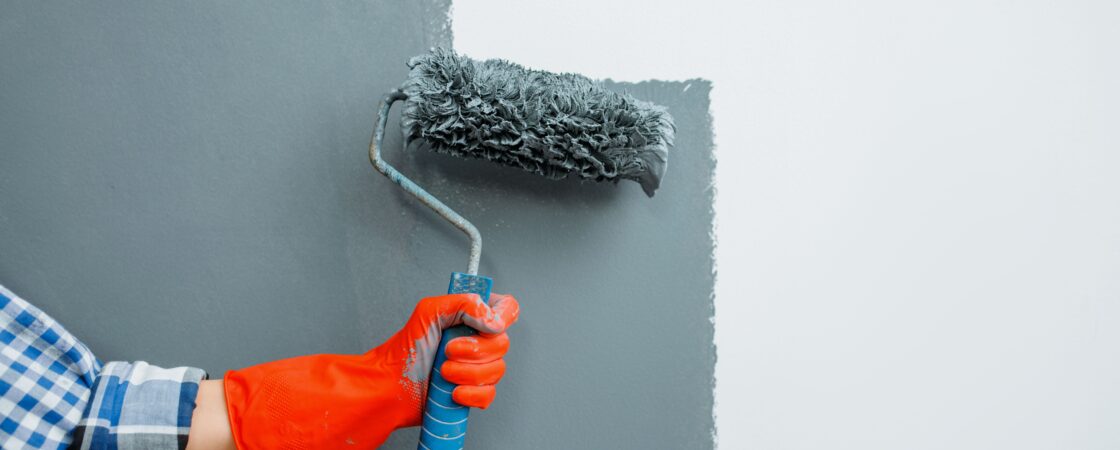Are you tired of that unsightly streaky finish on your freshly painted walls or furniture? Brush marks can ruin the aesthetic appeal of your painting projects, leaving you frustrated and dissatisfied. But fear not! In this comprehensive guide, we will walk you through the best techniques to paint without leaving those bothersome brush marks. Say goodbye to amateurish results and hello to a professional, smooth finish that will make your work stand out.
Choosing the Right Tools
The first step in achieving a brush mark-free finish is selecting the right tools. Here’s what you need:
1. Quality Brushes
Invest in high-quality brushes that are specifically designed for the type of paint you’re using. Quality brushes not only hold more paint but also have fine bristles that help in achieving a smoother finish. Look for brushes with synthetic bristles for water-based paints and natural bristles for oil-based paints.
2. Paint Rollers
While brushes are great for intricate work, rollers are excellent for larger surfaces like walls. Opt for a high-density foam roller for a smooth application. Make sure it’s clean and free from debris before you start.
3. Painter’s Tape
Painter’s tape is your best friend when it comes to achieving clean and precise lines. Use it to mask off areas you don’t want to paint and prevent any accidental brush marks.
Preparing the Surface
Proper surface preparation is crucial in ensuring a flawless paint job. Here’s what you need to do:
1. Clean the Surface
Dust, dirt, and imperfections on the surface can lead to brush marks. Clean the area thoroughly with a damp cloth or sponge, and let it dry completely before you start painting.
2. Sanding
For a truly smooth finish, consider lightly sanding the surface. Sanding helps to remove imperfections and smooth out any rough spots, allowing the paint to adhere evenly.
3. Prime the Surface
Priming is essential for achieving a uniform finish. It creates a smooth base for the paint to adhere to, reducing the likelihood of brush marks.
Using the Right Painting Techniques
Now, let’s dive into the techniques that will help you paint like a pro without leaving brush marks:
1. Load Your Brush Properly
Dip your brush into the paint about a third of the bristle length. Avoid overloading the brush, as this can lead to drips and uneven application. Excess paint on the brush is a common culprit for brush marks.
2. Apply Even Pressure
When applying the paint, use even pressure on the brush or roller. Uneven pressure can result in streaks and marks. Keep a steady hand and maintain a consistent stroke.
3. Work in Sections
Divide your painting project into manageable sections. Finish one section completely before moving on to the next. This will help you maintain a wet edge and prevent visible brush marks where one section overlaps with another.
4. Use a Paint Extender
A paint extender is a handy product that extends the drying time of your paint. This extra time allows the paint to level out, reducing the chances of brush marks. Simply add a paint extender to your paint according to the manufacturer’s instructions.
5. Feathering
Feathering is the technique of lightly blending the edges of the wet paint into the painted area. This helps to eliminate brush marks and create a seamless finish.
Brush Strokes Matter
The direction and pattern of your brush strokes can greatly affect the finish. Here are some tips to keep in mind:
- Straight Strokes: Use long, straight strokes in a single direction. Avoid short, choppy strokes that can create a textured look and visible brush marks.
- Crosshatch Strokes: For larger surfaces, consider using a crosshatch pattern. Paint first in one direction and then in a perpendicular direction, creating a grid-like pattern. This method helps to distribute paint evenly.
Choose the Right Paint
The type of paint you use can significantly impact the outcome. Higher-quality paints are designed to level out more effectively, reducing the likelihood of brush marks. While they might be a bit more expensive, the result is often worth the investment.
Additionally, some paints are formulated specifically for smooth finishes. Look for labels like “smooth finish” or “brush mark resistant” when shopping for paint. These products are engineered to minimize imperfections.
Correcting Brush Marks
If you do encounter brush marks while painting, there are methods to correct them. One option is to lightly sand the surface once the paint has dried, and then apply a thin, even coat of paint. Alternatively, you can use a technique called “feathering” to blend out the brush marks. Feathering involves lightly brushing over the marks to spread and smooth the paint.
Allow for Proper Drying Time
After you’ve applied the paint, resist the urge to touch it or add another coat right away. Proper drying time is essential for achieving a brush mark-free finish. Follow the manufacturer’s instructions on the paint can for the recommended drying time.
Additional Tips
- Quality Paint: Using high-quality paint can make a significant difference. Cheaper paints often have a thinner consistency and can be more prone to leaving brush marks.
- Temperature and Humidity: Pay attention to the room’s temperature and humidity levels. Extreme conditions can affect the drying time and paint flow.
- Lighting: Proper lighting is crucial for spotting any imperfections. Inspect your work under good lighting to identify and correct any brush marks.
Conclusion
In conclusion, achieving a brush mark-free finish is an attainable goal for any painter, from beginners to experts. By focusing on tool selection, brush strokes, and paint quality, you can create a professional, flawless look in your projects. Remember, practice and patience are your allies on this journey. And if you’re looking for expert guidance, consider consulting with “Painters Paddington.” Their experience and expertise can be a valuable resource in your pursuit of brush mark-free perfection.



